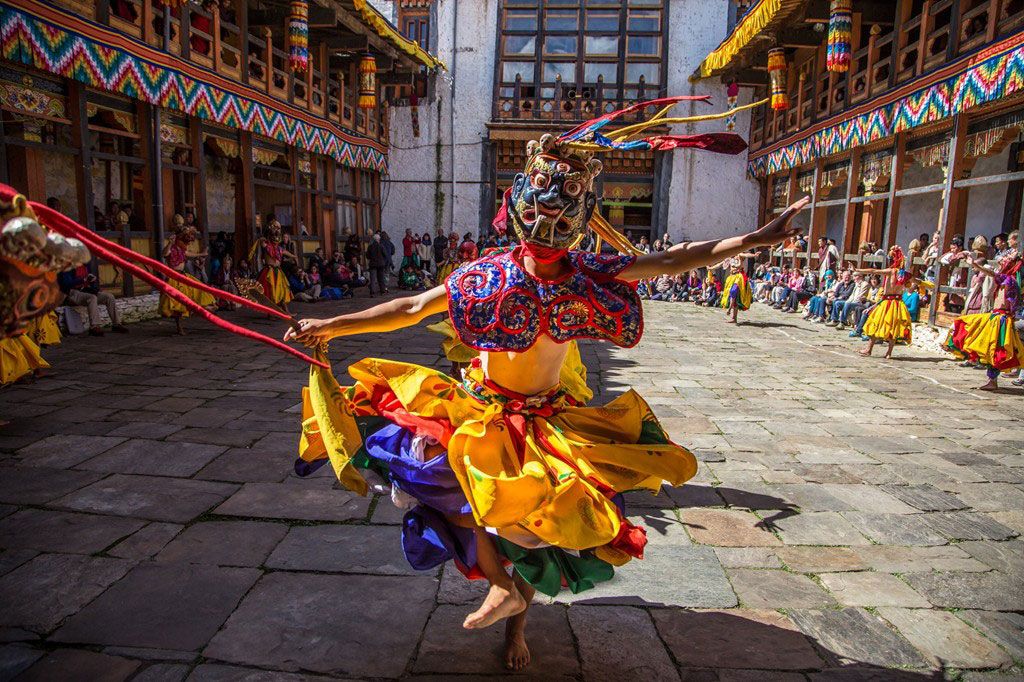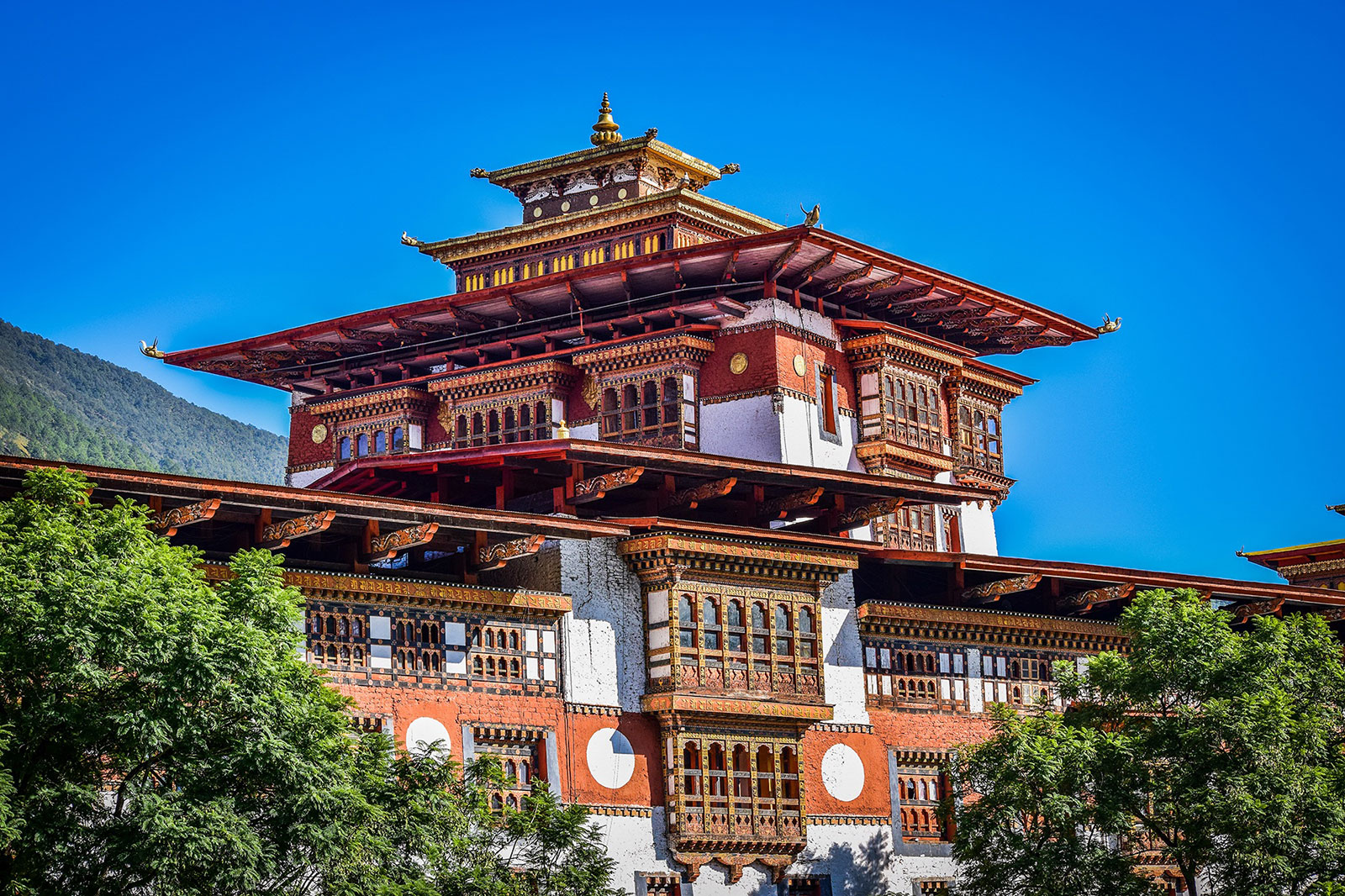The story of royal wedding in October, 1951 when Prince Jigme Dorji Wangchuck married to Ashi Kesang Choden Dorji was published in the National Geographic magazine made the world really discovered Bhutan and the Royal family.
The photos of the beautiful bride riding a caparisoned horse down the mountain followed by a brightly attired retinue, to meet her King was exotic, and had a fairy tale quality for a world which was out of a long war and needed to dream.
This occasion was perfect and, although Bhutanese people had no idea about this article, the country became known beyond the British and Indian spheres. The article also helped to shift the focus of attention from the King alone to the King and the Queen.
King Jigme Dorji Wangchuck (b. 1928) has just succeeded his father and the lady he was marrying was far from unknown to him. Her father Gongzim Sonam Tobgay Dorji(1896-1953), from Haa valley, was the Second King’s close assistant for external affairs, he was the Bhutanese agent in Kalimpong, and her grand-father Kazi Gongzim Ugyen Dorji (d.1917 ) was a trusted confident of the First King as well as the Bhutanese agent in Kalimpong .
Her mother Mayum Chonying Wangmo Dorji also called Rani Chuni (1897-1994) was a strong woman and the sister of the then King of Sikkim Chogyal Tashi Namgyal (1914 -1963).
She was known for her religious deeds but also, like her husband, for her progressive view on education, like starting the Haa school as well as educating Bhutanese in Kalimpong. These family ties are illustrated by a wonderful 1935 New Year photo taken in Calcutta where the families are pictured together and the future Third King sits in the front row next to his future queen, respectively aged 6 and 4 years.
Ashi Kesang Choden Dorji (b. 1930) was educated at St Joseph Convent in Kalimpong, then at Loreto College in Darjeeling, and later went to England for further education in an exclusive school. The new queen therefore not only spoke perfect English but she also had a great grasp on hospitality rules and etiquette as well as a deep understanding of religion. Besides her charm and intelligence, these qualities were going to be invaluable in her new role. King Jigme Dorji Wangchuck, the Father of Modern Bhutan, understood from the geo-political situation that if Bhutan wanted to survive as an independent nation, it had to open to the world.
In 1954, Queen Ashi Kesang Choden Wangchuck accompanied the King during their state visit to India and a strong friendship was born between Pandit Jawaharlal Nehru and the royal couple. It was followed by the historic visit to Bhutan in 1958 of the Indian PM and his daughter Indira Gandhi. These visits resulted in the ties with India being strengthened and in 1961 it became the first and foremost development partner.
In a span of ten years, the Queen gave birth to five children, and the heir to the throne was born in 1955. She was a great traveler and often visited her mother Mayum Chonying Wangmo at the Bhutan House in Kalimpong while upholding the name of Bhutan amongst her friends throughout the world and entertaining scores of visitors in Thimphu and Paro. She also strongly supported the King in his endeavor to establish a modern education system in the country, his development activities and Bhutan’s accession to the UN.
The queen’s kindness and élégance radiate throughout the numerous photos taken of her. She was a photographer’s delightat a time when print media ruled.
After the Third King’s prématuré death in 1972 and the coronation of their son Jigme Singye Wangchuck as the Fourth King in 1974, the Queen, who had a keen interest in the religious culture of Bhutan, dedicated more and more time to her religious practices and Works while still keeping contacts with her international friends and hosting important visitors.
Her religious devotion, encouraged by her mother Mayum Chonying Wangmo, made her the patron of many important religious masters, including His Holiness Dilgo Khyentse Rinpoche who presided over her annual rituals at Kyichu and Kuje temples for the prosperity of the King, the country and the people. She also sponsored religious public teachings by HH Dilgo Khyentse Rinpoche and many others important lamas. Ashi Kesang Choden Wangchuck supervised the restoration of numerous temples and chortens ad as early as 1961, she advised the Third King to protect and establish a Buddhist Institute at Semtokha Dzong, and in the early 80s, she influenced the establishment of a National Library. She generously sponsored the constructions of new temples such as Guru lhakhang at Kyichu, as well as the Demchog and Jamyang lhakhang in Punakha Dzong, the Kagongphursum and Zangdopelri in Kuje, amongst others. She also restores temples and established monastic schools in the true line of Buddhist Queens.
The chapter that Ashi Kesang Choden Wangchuck contributed in Brilliant Moon (pp.239-262) reflects her unfailing dedication to Buddhism and Bhutan.
Now, the Royal Grand Mother Ashi Kesang Choden Wangchuck still involves herself in cultural activities and was influential in the Dragon’s Gift exhibition which toured the world. With Ashi Kesang Choden Wangchuck, the Queen’s role in Bhutan was no more confined to being the head of the royal household, a Buddhist patron, and the consort of the King but had important public responsibilities. She empowered the Queen of Bhutan with an international stature. This is a role that the present Queen Mothers have perfectly endorsed, and which has been amplified by the development of the print, audio-visual and digital media in Bhutan and the world.
When in October 1988, His Majesty the 4th Druk Gyalpo Jigme Singye Wangchuck married Ashi Dorji Wangmo, Ashi Tshering Yangdon, Ashi Tshering Pem and Ashi Sangay Choden of the prestigious Zhabdrung lineage, the event did not make headlines around the world, let alone in Bhutan.
TV was not yet in Bhutan, and there was only one newspaper. The marriage was a traditional ceremony in Punakha, followed by lunch parties at Dechenchholing palace. Few at that time would have guessed the fantastic development of the media and the extraordinary influence the Queens were going to have in the country and beyond. Most of the Bhutanese had even never seen a picture of the Queens.
From 1998, with the opening of the country to TV channels, BBS, and internet, the outlook on the Queens has changed even if the respect of privacy is kept.
They are seen on the screen, walking, travelling throughout the country and talking to the people in the remotest corners of the kingdom. Their activities reverberate through Bhutan and the world in audio-visual form.
The Queens, like their predecessors, are devout Buddhist and have restored many religious buildings.They have built several landmarks such as the Khamsum Yulley Chorten in Punakha and the Druk Wangyal Chortens and temples at Dochula. They have also immersed themselves in social work and have become patrons of charities and cultural institutions which all have a website.
Ashi Dorji Wangmo Wangchuck is also an author who has greatly contributed to the history of Bhutan through her books. The Queens, now Queen Mothers, have a voice of their own and their voices are heard. They attend not only official functions but also international events where they represent Bhutan. Universally considered beautiful and charming, they are also empowered women who play a crucial role in the age of media supremacy to bring forth the image of Bhutan in the international arena and contribute to social awareness in the country.
Ashi Lemo, who walked from Kurtoe to Bumthang in 1902, was a woman of her time and the Queens who followed her played an increasing role as per time and circumstances. But nobody could have imagined even a year ago that when on May 20th, 2011, His Majesty Jigme Khesar Namgyel Wangchuck announced his wedding, the news would be immediately tweeted throughout the world.
Trashi Delek. (Concluded)
The writer, also known as Tashi Om, has been in Bhutan for 30 years. She works with the Institute of Language and Cultural Studies of the Royal University of Bhutan, Thimphu.)









